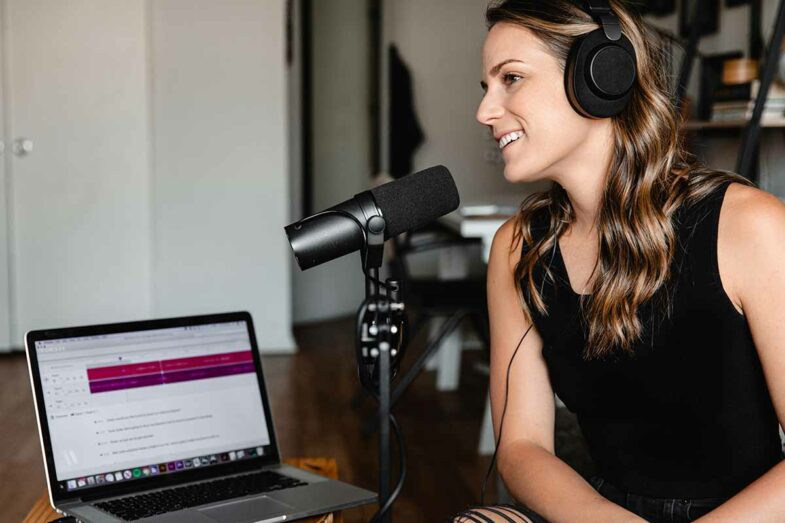Photo by Amina Filkins from Pexels
You have knowledge. It’s something you’re constantly developing the more you work, interact with others, study, read, etc. It’s nearly impossible to go through life without learning something: a skill, language, theory, formula, or knack, that someone else wishes they had. Essentially, it’s the desire of others to gain access to information or expertise they don’t have that makes the knowledge economy so popular. Because the knowledge economy is growing and evolving, more entrepreneurs and creators are joining it. If you want to join it too, the best way to do it is to learn how to create an online course and begin the process of creating one.
The Four Phases To Create An Online Course
It can take months to create an online course, and even longer if you’re learning as you go. To help you save time, we’ve developed a four-phase strategy, outlining what you need to do in a step by step approach.
Phase One: The Basics
Determine What You Know
Sometimes course material is lurking in the very depths of your being. The best way to draw it out is to start listing what you know. It’s not always easy to instantly think of what you know how to do, especially when so many of your skills are obtained because of something else you’re doing.
However, once you have a list of everything you know, it’s time to divide your knowledge into categories.
Most – if not all – knowledge can be divided into three categories: expertise, experience, and aptitude.
Expertise: The skills and knowledge you’ve gained through training, practice, or studying.
Experience: These are the skills you’ve developed and the information you’ve acquired through trial-and-error or real-life encounters.
Aptitude: Some might term this as a knack for something. But aptitude is something you may require training to finetune but comes to you naturally.
Ideally, you want to teach a subject or subjects where you have all three of these are present. That way, you’re giving students the most well-rounded and thorough information at your disposal.
Ascertain Market Interest
To create a course, you don’t only need knowledge about a subject, you also need verifiable interest. Because where online and traditional courses differ is competitiveness. There’s far more competition for online courses because learners can get information for free if they choose to. There are also many courses going in and out of circulation every year. Therefore, if there’s not sufficient interest in what you want to teach, you will have used your resources for nothing. Therefore, before you continue, do some research of your own. Scour sites like Udemy, Coursera, and YouTube to find skills that people are in-demand.
You can determine whether a skill is in demand by filtering for by most popular or by view count.
Choose A Skill Level
Are you teaching beginners or experts? A course is never a course for everyone. Either advanced learners will find no use in a course because there’s too much beginner content, or beginners will feel lost because the course is too advanced.
By choosing a skill level for your online course you will know what to exclude from your content. It will also help you further down the line when you need to market your course.
Phase Two: The Structure
Start At The End
When you’re developing your course you should never start at the beginning. The best method – and the one that will enable you to create the most valuable content for learners – is if you work backward. Begin your process by outlining what you want your learners to accomplish or understand once the course is complete.
Create Main Points
A course needs to be cohesive if you want learners to find value in it. The best way to create cohesion is to segment your course based on the vital points you need to cover throughout the course. Therefore, your main points should create a pathway that nudges the learner closer to the end goal you’ve already determined they should reach.
Before creating a main point, think of everything that your learner needs to know for them to reach the end goal.
Once you have the list divide those points into categories. These categories will become your modules, and the subjects will be the sections within that module.
Even if you have a 1-minute video explaining a topic, that’s fine. The reason you’re creating main points, and segmenting your course to this extent, is so that learners can easily rewatch content.
Create Milestones
Milestones help learners navigate the course with greater ease and keep track of their progress. A milestone can take the form of a test, activity or project, or a summary revising what you’ve learned.
Once you know what your modules are going to be, you should create a milestone that helps a learner retain the information they’ve just learned. These milestones will also help learners remain interested in the course as they continue to navigate through it. These milestones may also serve another purpose, and that’s to help learners identify the information they still need to grasp or fine-tune.
Because you’re creating a digital course – that can last well after you’ve published it – it’s also a good idea to ensure that the milestones don’t need help from, or interaction with, other attendees.
Research Topics
Before you can create your script, it’s imperative that you research topics, so you’re not just pulling information from thin air. While it may be your experience on a subject be sure that you’re using:
a) Industry accepted terminology
b) Making concise points
c) Backing up your claims with research
Phase Three: The Course
Create A Script
Now that you have your milestones and main points, create your script. A course of about two hours will be 18,000 words. However, you should ensure that an individual video within your course does not exceed 15 minutes (approximately 2,250 words) so you keep learners engaged.
Also, as you write your script, read it aloud. This is the best way to determine that what you’re writing makes sense when spoken. This is also the time when you should double-check that your information is correct and is most relevant.
Record & Edit
You can either choose to screen record, create a talking head video, or do a slideshow. However, whatever you choose, ensure that there are audio and visuals components, as this will be the most engaging format for learners.
Whether you’re creating a screen recorded course, a presentation, or including these elements to break up a talking head, be sure to create visuals that correlate with what you’re saying. You can choose to record these elements first before recording a voice-over, or you can use your script as a guide when recording these elements.
Once all the moving parts are complete, take a break from listening to your course. Return to it in a week to complete final editing.
Phase Four: The End
Get Feedback
Before you take your course to the market, assemble a focus or test group. The purpose of the group is to give unbiased feedback about your course, and identify any pitfalls that you otherwise wouldn’t be able to see.
Begin Marketing
Once you have feedback and can implement that feedback into your course, you can begin marketing the course. If you’re using a platform like Udemy, be sure you’re advertising your course using your instructor code, that way, you will earn more from your efforts. If you’re using self-hosting a course, consider giving learners incentive to promote the course among their friends and followers by creating an affiliate or referral program.
There are several other free and paid processes you can use to market your course and have it gain traction.
You can read more about marketing an online course here.
Fine Tune
Once your course is on the market – and has been attended by learners outside of your control group, you will have a better understanding of what needs further explanation or what content is redundant.
Once you have that information, you can begin to fine-tune and hone in on subjects that learners are struggling with and ensure that – overall – your course is as clear and concise as possible.
Shelf
In the knowledge economy, information has a shelf life. Unless you are willing to spend years developing a course that will be relevant far into the future, information within your course will become outdated. Most courses have a shelf life of about two years before it is apparent to new students that information in the course is out of date. It is at this time that you should shelf the course.
However, you don’t need to shelf your course indefinitely. Instead, you can use the basic premise of the course to create new material. You can use this material to create another online course, a book, a masterclass, or blog posts.
Thank you for reading and if you have anything to ask, don’t hesitate to drop a message on our social media where you can find us as @forcreatorscom.









